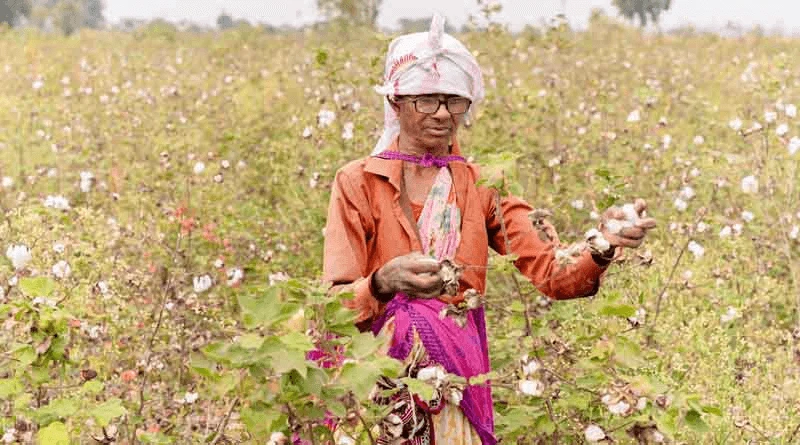Insect-resistant, genetically modified Bt cotton revolutionized farming in India. Now it faces challenges. Here’s why
Insect-resistant, genetically modified Bt cotton revolutionized farming in India. Now it faces challenges. Here’s why


The approval of Bt cotton was hailed as a major step toward modernizing Indian agriculture. The promise of increased yields, reduced input costs, and better resistance to pests made it an attractive option for farmers, especially in regions plagued by bollworm infestations. India, being one of the world’s largest cotton producers, stood to gain significantly from this technology.
While the initial years of Bt cotton cultivation were marked by success, problems began to surface over time. One of the key challenges was the emergence of resistance among pests, particularly the pink bollworm. … Another challenge was the rise in secondary pests. With the decline in bollworm populations, other pests such as aphids, jassids, and whiteflies began to proliferate, leading to new problems for cotton farmers.
…
While [Bt cotton] continues to be the dominant cotton variety grown in the country, its efficacy has diminished due to pest resistance…. [M]any farmers have reverted to using chemical pesticides to protect their crops, negating one of the primary benefits of Bt cotton.
…
While Bt cotton has faced challenges, the development of newer GM cotton varieties, such as Bollgard III, which offers protection against both bollworm and secondary pests, could provide a solution. However, the regulatory environment in India needs to be conducive to the introduction of such technologies, ensuring that they are tested rigorously for safety and efficacy.
…
The future of cotton farming in India requires a multi-faceted approach that addresses the limitations of Bt cotton while exploring alternative solutions. One of the key lessons from the Bt cotton experience is the need for an integrated approach to pest management. Rather than relying solely on genetic modifications to control pests, farmers should adopt a combination of biological control methods, crop rotation, and judicious use of chemical pesticides to manage pest populations effectively.
This is an excerpt. Read the original post here

 | Videos | More... |

Video: Nuclear energy will destroy us? Global warming is an existential threat? Chemicals are massacring bees? Donate to the Green Industrial Complex!
 | Bees & Pollinators | More... |

GLP podcast: Science journalism is a mess. Here’s how to fix it

Mosquito massacre: Can we safely tackle malaria with a CRISPR gene drive?

Are we facing an ‘Insect Apocalypse’ caused by ‘intensive, industrial’ farming and agricultural chemicals? The media say yes; Science says ‘no’
 | Infographics | More... |

Infographic: Global regulatory and health research agencies on whether glyphosate causes cancer
 | GMO FAQs | More... |

Why is there controversy over GMO foods but not GMO drugs?

How are GMOs labeled around the world?

How does genetic engineering differ from conventional breeding?
 | GLP Profiles | More... |

Alex Jones: Right-wing conspiracy theorist stokes fear of GMOs, pesticides to sell ‘health supplements’




 Viewpoint — Fact checking MAHA mythmakers: How wellness influencers and RFK, Jr. undermine American science and health
Viewpoint — Fact checking MAHA mythmakers: How wellness influencers and RFK, Jr. undermine American science and health Viewpoint: Video — Big Solar is gobbling up productive agricultural land and hurting farmers yet providing little energy or sustainabilty gains
Viewpoint: Video — Big Solar is gobbling up productive agricultural land and hurting farmers yet providing little energy or sustainabilty gains Fighting deforestation with CO2: Biotechnology breakthrough creates sustainable palm oil alternative for cosmetics
Fighting deforestation with CO2: Biotechnology breakthrough creates sustainable palm oil alternative for cosmetics Trust issues: What happens when therapists use ChatGPT?
Trust issues: What happens when therapists use ChatGPT? 30-year-old tomato line shows genetic resistance to devastating virus
30-year-old tomato line shows genetic resistance to devastating virus California, Washington, Oregon forge immunization alliance to safeguard vaccine access against federal undermining
California, Washington, Oregon forge immunization alliance to safeguard vaccine access against federal undermining The free-range chicken dilemma: Better for birds, but with substantial costs
The free-range chicken dilemma: Better for birds, but with substantial costs ‘You have to treat the brain first’: Rethinking chronic pain with Sanjay Gupta
‘You have to treat the brain first’: Rethinking chronic pain with Sanjay Gupta
